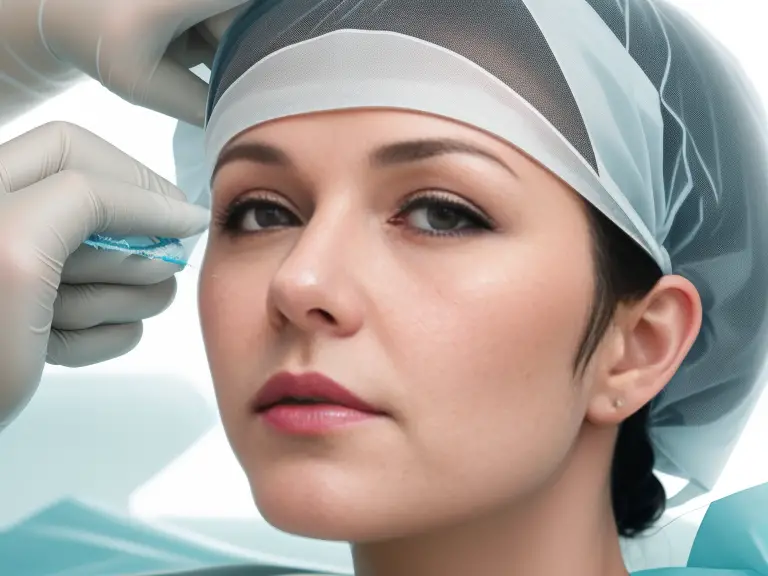Yes, as a nurse, you can perform PDO threads. However, it is important to understand the legal implications, necessary skills and training, as well as the potential risks and challenges associated with performing PDO thread procedures.
What are PDO Threads?
Understanding PDO Threads
PDO (polydioxanone) threads are biodegradable sutures that are commonly used in aesthetic medicine to lift and tighten the skin. These threads are inserted into the skin using a needle or cannula, and they stimulate the production of collagen, resulting in a rejuvenated and lifted appearance.
The Use of PDO Threads in Aesthetic Medicine
PDO threads are versatile and can be used in various areas of the face and body to address sagging skin, wrinkles, and loss of volume. Some common areas where PDO threads are used include the cheeks, jawline, neck, and buttocks. They are a popular non-surgical alternative to facelifts and body contouring procedures.
Legal Implications of Nurses Performing PDO Threads
Understanding Your Scope of Practice as a Nurse
As a nurse, it is crucial to understand your scope of practice, which is defined by the regulatory body in your jurisdiction. This scope outlines the activities and procedures that you are legally authorized to perform. Performing procedures outside of your scope of practice can have legal consequences.
Legal Consequences of Overstepping Your Boundaries
Performing PDO thread procedures may fall outside the scope of practice for some nurses, depending on the jurisdiction. Research and understand the laws and regulations in your specific area before offering these procedures. Performing PDO threads without the proper authorization may result in disciplinary action, legal consequences, and potential harm to patients.
Skills and Training Required to Perform PDO Threads
Essential Skills for PDO Thread Procedures
Performing PDO threads requires a certain set of skills to ensure safe and effective outcomes. Some essential skills include:
- Anatomy knowledge: Understanding the anatomy of the face and body is crucial to accurately place PDO threads and minimize the risk of complications.
- Injection techniques: Nurses with experience in administering injections have an advantage when it comes to performing PDO thread procedures, as the insertion of the threads involves a similar technique.
- Communication skills: Good communication skills are essential to assess patient needs, explain the procedure, and ensure informed consent.
Training Programs for Nurses
To perform PDO threads, it is recommended to undergo specialized training programs that provide in-depth knowledge and hands-on practice. These training programs are designed to teach nurses the necessary skills and techniques for safe and effective PDO thread procedures. Some organizations offer certification courses specifically for nurses interested in expanding their aesthetic nursing practice.
Benefits of Performing PDO Threads as a Nurse
Enhanced Career Opportunities
By adding PDO thread procedures to your skill set as a nurse, you can expand your career opportunities in the field of aesthetic medicine. This can lead to increased job prospects, higher earning potential, and the ability to work in specialized clinics or medical spas.
Rewarding Patient Outcomes
Performing PDO threads can offer rewarding patient outcomes, as the procedure can provide patients with a non-surgical option for skin tightening and rejuvenation. Helping patients regain their confidence and achieve their desired aesthetic goals can be incredibly fulfilling as a healthcare professional.
Risks and Challenges of Performing PDO Threads as a Nurse
Potential Risks to Consider
While PDO thread procedures are generally safe when performed by trained professionals, there are potential risks and complications to consider. These may include:
- Infection: There is a risk of infection following the insertion of PDO threads, which can be minimized with proper sterile techniques.
- Bruising and swelling: Patients may experience bruising and swelling at the insertion sites, which are typically temporary and resolve on their own.
- Thread migration: In rare cases, PDO threads may migrate from their intended position, leading to suboptimal results or the need for corrective procedures.
Overcoming Challenges in PDO Thread Procedures
Performing PDO thread procedures can also come with its own set of challenges. Some common challenges include:
- Technical skill: PDO thread procedures require precision and technical skill to achieve optimal results. Nurses must be confident in their abilities to properly place the threads and address any complications that may arise.
- Patient selection: Choosing the right candidates for PDO thread procedures is crucial. Nurses must have the ability to assess patients’ medical history, skin condition, and aesthetic goals to determine if they are suitable candidates for the procedure.
- Managing patient expectations: It is important to manage patient expectations and provide realistic outcomes for PDO thread procedures. Nurses should ensure that patients have a clear understanding of the potential results and any limitations associated with the procedure.
In summary, as a nurse, you have the ability to perform PDO threads. By understanding your scope of practice, acquiring the necessary skills and training, and being aware of the potential risks and challenges, you can safely and effectively offer PDO thread procedures as part of your nursing practice. With the right knowledge and expertise, you can provide patients with a non-surgical option for skin tightening and rejuvenation, ultimately helping them achieve their aesthetic goals.
FAQs
Q: What are the different types of PDO threads available?
A: There are various types of PDO threads available, including mono threads, cog threads, and screw threads. Each type has different purposes and effects on the skin, so it is important to choose the appropriate type based on the patient’s needs and desired outcome.
Q: How long do the effects of PDO threads last?
A: The effects of PDO threads can vary depending on several factors, such as the patient’s age, lifestyle, and overall health. On average, the results can last anywhere from 6 months to 2 years. However, individual results may vary, and some patients may require touch-up treatments to maintain the desired outcome.
Q: Can PDO threads be used on all skin types?
A: PDO threads can be used on a wide range of skin types, including different ethnicities and skin tones. Assess each patient’s skin condition and perform a thorough consultation to determine if they are a suitable candidate for the procedure.
Q: Are PDO thread procedures painful?
A: The level of discomfort experienced during a PDO thread procedure can vary from person to person. Some patients may experience mild discomfort or a slight pinch during the insertion of the threads. However, topical anesthesia or local anesthesia can be used to minimize any potential discomfort.
Q: Can PDO threads be combined with other aesthetic procedures?
A: Yes, PDO threads can be combined with other aesthetic procedures to enhance the overall results. For example, they can be used in conjunction with dermal fillers or botulinum toxin injections to achieve a more comprehensive facial rejuvenation.
Q: Are there any contraindications for PDO thread procedures?
A: While PDO thread procedures are generally safe, there are some contraindications to consider. These may include active infections, certain medical conditions, pregnancy, or breastfeeding. Assess each patient’s medical history and consult with a healthcare professional to determine if they are a suitable candidate for the procedure.
Q: How long does a PDO thread procedure typically take?
A: The duration of a PDO thread procedure can vary depending on the treatment area and the number of threads being inserted. On average, the procedure can take anywhere from 30 minutes to 1 hour. However, allocate enough time for the consultation, preparation, and post-procedure care.
Q: What is the recovery process like after a PDO thread procedure?
A: The recovery process after a PDO thread procedure is typically minimal. Patients may experience some bruising, swelling, or tenderness at the insertion sites, but these symptoms usually subside within a few days. Follow post-procedure care instructions provided by the healthcare professional to ensure optimal healing and minimize any potential complications.
Q: Can PDO threads be removed if the patient is not satisfied with the results?
A: Yes, PDO threads can be removed if necessary. However, removing the threads can be more challenging than inserting them, and it may require the expertise of a healthcare professional. Discuss any concerns or dissatisfaction with the results with the healthcare professional who performed the procedure.
Q: How soon can patients see the results of a PDO thread procedure?
A: Patients may notice some immediate results after a PDO thread procedure, as the threads provide an instant lifting effect. However, the full effects of the procedure may take several weeks to fully manifest, as collagen production is stimulated and the skin gradually tightens and rejuvenates.














